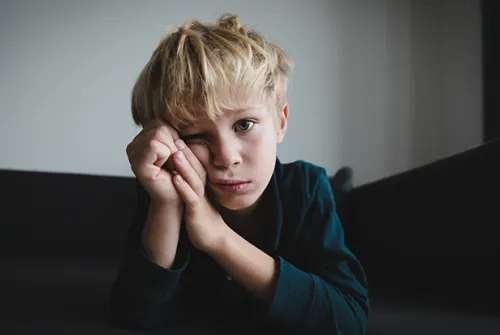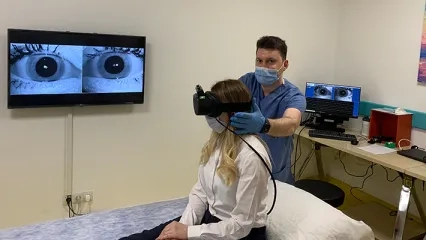Alo Yeditepe
Alo Yeditepe
Causes of Hearing Loss
Stating that hearing loss is seen in two ways, Yeditepe University Hospitals Ear, Nose, and Throat specialists said, "Transmission type hearing loss concerns the ossicles in the outer ear canal, middle ear, and middle ear. Sensorineural hearing loss occurs in the inner ear," explaining that hearing loss requires an approach according to the region where it occurs and why...
Cochlear Implant Is Performed in Advanced Hearing Losses
In conduction-type hearing loss, causes such as infections in the external auditory canal, earwax, and bone formation called exostosis to play an active role. However, this problem can also be encountered in diseases such as middle ear infections that cause deformation in the bones in the middle ear, cholesteatoma, middle ear tumors, and chronic otitis media or otosclerosis that causes perforation or thickening of the eardrum. The involvement of the inner ear stands out in the sensorineural hearing loss. This disorder is seen in hearing loss called presbycusis, which is usually seen at an advanced age, in people who work in a constantly noisy environment or those who are exposed to sudden, excessive noise due to explosion and loud music noise, due to autotoxicity due to drug use and in the presence of inner ear tumors. Among the causes of sensorineural hearing loss, ENT specialists said, "This disorder can develop due to infections such as TORCH (toxoplasma, rubella, cytomegalovirus or herpes simplex) in the premature or newborn period. Genetic diseases can also cause hearing loss."
Patient History Is at the Forefront of Diagnosis
ENT specialists of Yeditepe University Hospitals, who said that they were treated with surgery, medical treatment, or hearing aids by identifying the causes that lead to this transmission type communication losses, said: "In childhood, this disorder is most often caused by otitis media. In these children, a patient history is first taken to confirm a diagnosis. In addition to pain and hearing loss usually in the ear, families also mention complaints of upper respiratory tract infections such as the sore throat. Pediatric patients may also have allergies, adenoids, and tonsil complaints. Audiometry tests measure hearing and tympanometry tests measure pressure in the middle ear. If hearing loss is detected in the child after the examination, drug treatment is applied first. If the infection in the middle ear is not resolved in this way, the patient is kept in follow-up."
Not Every Child Is Intubated
In cases where fluid accumulation is detected in the middle ear, it is expected to dissolve the fluid with drug treatment first. Children experience complaints such as hearing loss, hearing loss, especially not being able to follow the lesson, distraction, turning up the TV too much, not being able to respond when their parents call, or not being able to distinguish speech, especially in noisy environments. Regarding the treatment approach, in this case, ear tube treatment is recommended if there is no improvement despite antibiotic treatment, nasal sprays, and suspension drugs called systemic decongestants. Yeditepe University Hospitals ENT specialists reminded that every child is not fitted with an ear tube: "About 8 percent of these infections are corrected by antibiotic and decongestant treatment. However, it should not be forgotten that if children with this condition are not treated correctly, permanent hearing loss may be encountered in the future. Because the discomfort can lead to some permanent changes in the ossicle and membrane structure in the middle ear."
The Ear Needs to Be Protected After the Surgery
After the surgery, the ear tubes are automatically thrown into the outer ear canal within six months to one year on average, and families often do not notice this, and what should be done to protect the ear after the surgery is listed as follows: "Tubes that do not come out spontaneously in routine controls are removed after two years. After the surgery, the ear should never be watered until the tube completes its task and comes out. Therefore, it is important to put vaseline cotton in the ears of children, especially when bathing, or to use some plugs suitable for the outer ear canal that can be purchased from the pharmacy. If it is a sea holiday, the external ear canal can be completely closed with some apparatus that can be obtained from companies selling hearing aids."
This content was prepared by Yeditepe University Hospitals Medical Editorial Board.
”
See Also
- What Are Head and Neck Cancers? Diagnosis and Treatment
- Causes and Treatment of External Ear Inflammation
- Tonsillectomy in Children
- Ear Pain During Flight Can Be a Sign of Some Diseases!
- They Said He Could Never Speak Again Due to Laryngeal Cancer, But Today After the Surgery He Underwent, He Can Speak!
- "Vertigo Is a Treatable Condition"
- Ringing in the Ears Does Not Mean Somebody Is Calling for You
- Pool and Hot Weather Trigger Ear Eczema
- Hearing Health
- Allergic Rhinitis Targets People in Big Cities
- Can Nutritional Defects Underlie Middle Ear Inflammation?
- Stem Cell May Be the Future Cure to Hearing Loss with Bionic Ear as Hope
- Warning from the specialist: "Beware if your child turns up the volume of the TV too loud!"
- Nasal Sprays Can Be Addictive!
- Sudden Hearing Loss and Dizziness Can Lead to Irreversible Results If Not Treated!
- Adenoid and Tonsil Problems in Children
- Nasal Sprays Can Be Addictive
- When Should Adenoid Surgery Be Performed in Children? When Should It Not Be Done?
- Treated For Asthma For Two Years But Has Had A Tumour In Her Trachea
- Treatment without Tampons in Nasal Surgeries
- Chance of Treatment in Patients Who Have a Tube Inserted in Their Throat to Breathe
- Can Infection Cause Permanent Hearing Loss?
- He Was Ashamed to Speak, and He Was Reborn with His New Voice
- Survived from Tumor Covering Half of Larynx With Closed Surgery
- Beware of hoarseness lasting longer than 15 days!
- Don’t Let Allergic Rhinitis Spoil Your Life
- Throat Infection
- ENT Problems Seen in the Summer
- Nose Bleeding
- Unexpected Causes of Hearing Loss
Alo Yeditepe








